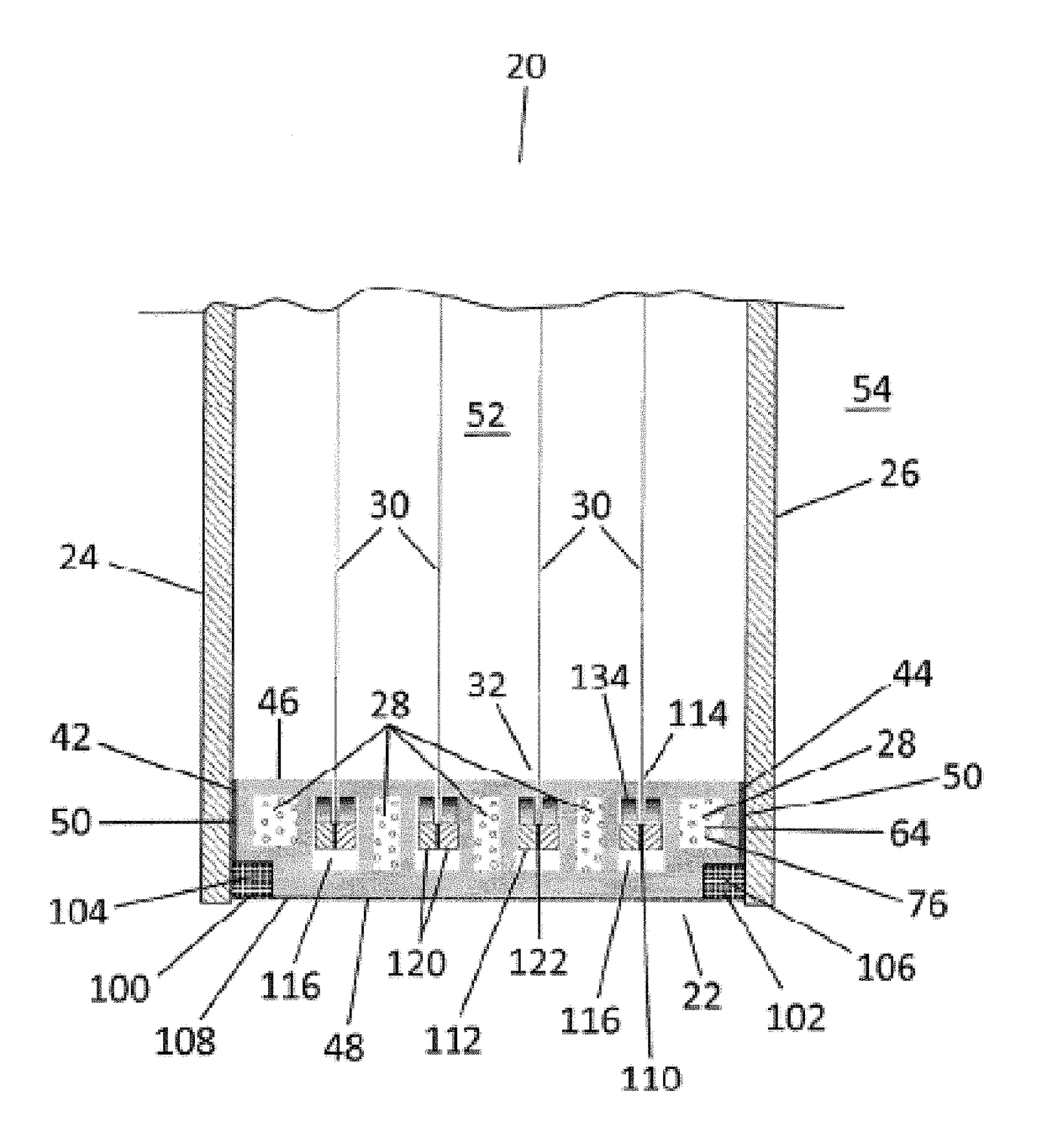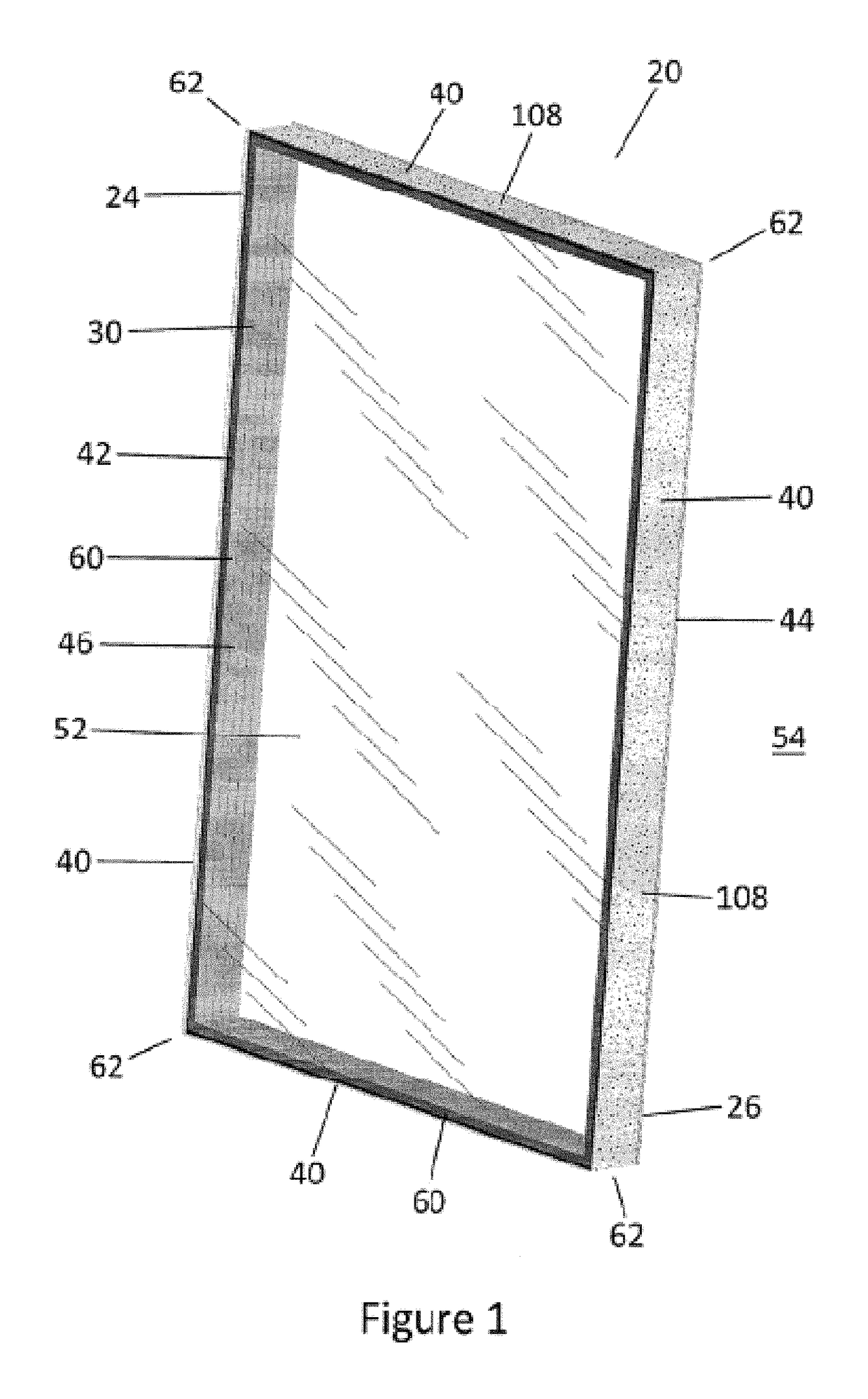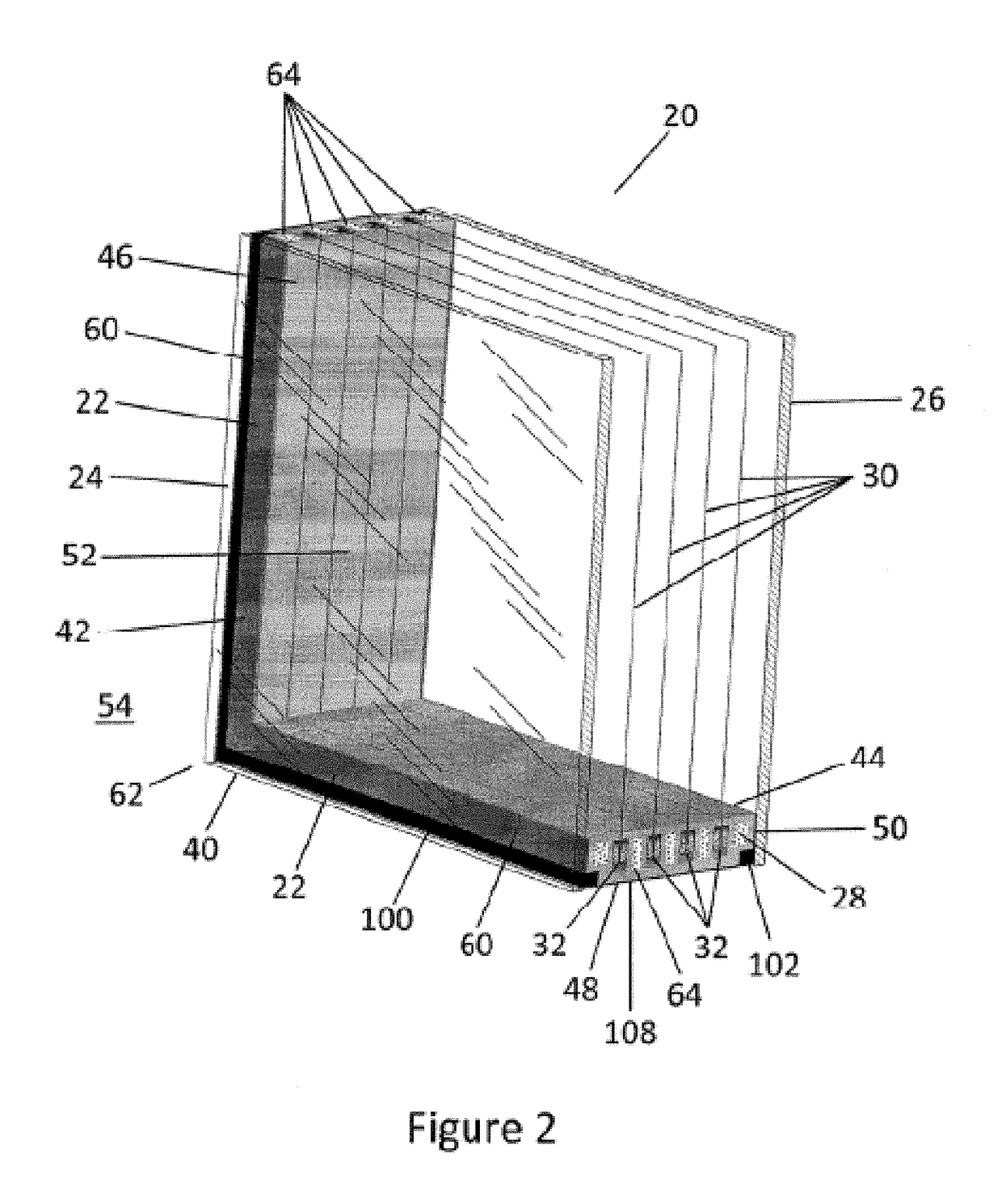Pressure compensated glass unit
a technology of pressure compensation and glass unit, which is applied in the direction of parallel plane units, doors/windows, building components, etc., can solve the problems of desiccant being saturated or spent, glass panes, seals, etc., and achieve the effect of improving the properties of glass lite and improving the properties of film layer
- Summary
- Abstract
- Description
- Claims
- Application Information
AI Technical Summary
Benefits of technology
Problems solved by technology
Method used
Image
Examples
Embodiment Construction
[0131]The present invention is directed at a pressure compensated glass unit.
[0132]Two exemplary embodiments of the glass unit are depicted in FIGS. 1-18. FIGS. 1-15 depict a first exemplary embodiment of the glass unit in which the glass unit comprises a plurality of intermediate film layers. FIGS. 16-18 depict a second exemplary embodiment of the glass unit in which the glass unit comprises a plurality of intermediate glass lites.
[0133]FIGS. 7-15 depict details of an exemplary embodiment of a pressure equalization conduit which is included in the first exemplary embodiment of the glass unit of FIGS. 1-15. The pressure equalization conduit which is included in the second exemplary embodiment of the glass unit of FIGS. 16-18 is very similar to the exemplary embodiment of the pressure equalization conduit which is depicted in FIGS. 7-15.
[0134]In the description which follows, features of the second exemplary embodiment of the glass unit which are equivalent to features of the first e...
PUM
 Login to View More
Login to View More Abstract
Description
Claims
Application Information
 Login to View More
Login to View More - R&D
- Intellectual Property
- Life Sciences
- Materials
- Tech Scout
- Unparalleled Data Quality
- Higher Quality Content
- 60% Fewer Hallucinations
Browse by: Latest US Patents, China's latest patents, Technical Efficacy Thesaurus, Application Domain, Technology Topic, Popular Technical Reports.
© 2025 PatSnap. All rights reserved.Legal|Privacy policy|Modern Slavery Act Transparency Statement|Sitemap|About US| Contact US: help@patsnap.com



